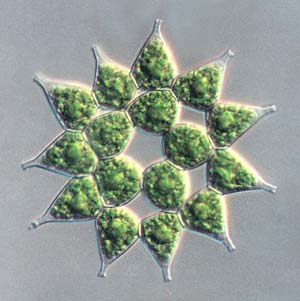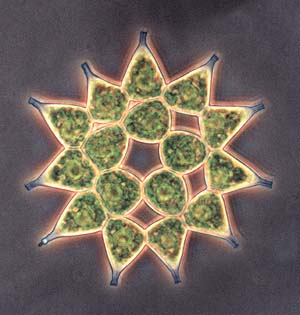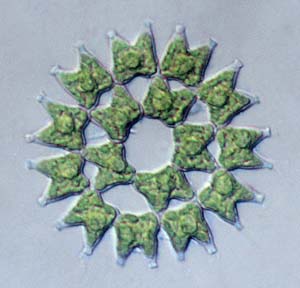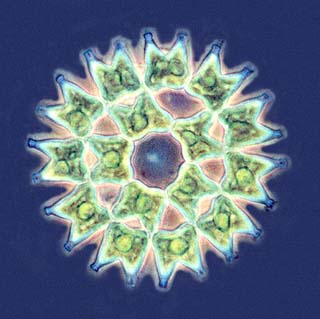| Acknowledgments
I am
grateful to many people. First of all, Wim van Egmond has persuaded and
encouraged my first on-line publication and his kindness for this web page.
To Dr. Chanpen Chanchao, a nice teacher, and Brandon Jones, a good friend,
for their kind advice and improvement of the text. Finally, I am particularly
indebted to Micscape to give me a good chance for this publication.
References:
Bold,
H. C. 1985. Introduction to the Algae: structure and reproduction.
2nd ed. The United States of America: Prentice-Hall.
Boney,
A. D. 1975. Phytoplankton. London: Edward Arnold.
Brown,
R. W. 1956. Composition of Scientific Words. Washington: Smithsonian
Institution Press.
Hoek,
C. van den., D. G. Mann and H. M. Jahns. 1995. Algae: An introduction
to phycology. Great Britain: Cambridge University Press.
Lee,
R. E. 1989. Phycology. 2nd ed. The United States of America: Cambridge
University Press.
Prescott,
G. W. 1978. How to Know the Freshwater algae. 3nd ed. The United
States of America: Wm. C. Brown Publishers.
Sharma,
O. P. 1986. Textbook of Algae. New Delhi: Tata McGraw-Hill Publishing.
Smith,
G. M. 1933. The Fresh-Water Algae of The United States. The United
States of America: McGraw-Hill Book.
|



